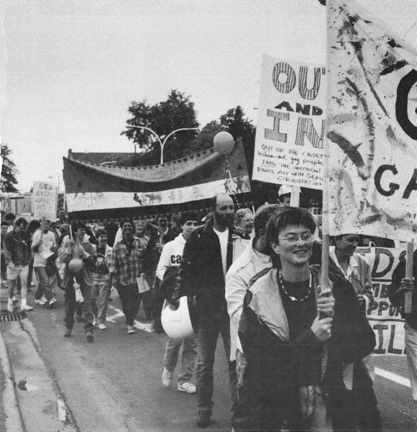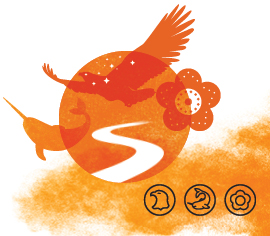
Black History / African Heritage Month in Canada
Poster and Information from African Nova Scotian Affairs - Government of Nova Scotia
In the past, the contributions of African Canadians have been acknowledged informally. Nova Scotia has been a leader in officially promoting and recognizing African Canadian heritage.
Some efforts include:
Some of these actions have influenced Canada to act on a national level:
African Heritage Month Booklist

February, 2022
Poster credit: African Nova Scotian Affairs - Government of Nova Scotia
Poster and information from Canadian Heritage, Government of Canada:
May is Asian Heritage Month in Canada, a time to reflect on and recognize the many contributions that Canadians of Asian heritage have made and continue to make to Canada.
Asian Heritage Month has been celebrated since the 1990s. In December 2001, the Senate of Canada adopted a motion proposed by Senator Vivienne Poy to officially designate May as Asian Heritage Month in Canada. In May 2002, the Government of Canada signed an official declaration to announce May as Asian Heritage Month.

Día de los Muertos / Day of the Dead
An annual display created by Dr. Erica Fischer
Department of Languages & Cultures
"The Day of the Dead is a joyous occasion to celebrate the memory of our departed loved ones and the continuity of life."
-- Dr. Fischer

Día de los Muertos / Day of the Dead
2022

2021

"The Halifax Pride Festival is an annual 11 day gathering in the Halifax Regional Municipality for the 2SLGBTQ+ community. It features over 150 community and Pride organized events celebrating the history, culture, activism, and perseverance of the queer community."

Black and white photo of the first Halifax pride march (1988). Credit: Halifax Pride
The Holodomor: Genocide of the Ukrainian people
Ukraine remembers - the World acknowledges
The Holodomor claimed millions of lives in Ukraine and was one element of the genocidal assault by the communist regime to destroy the Ukrainian nation.
An independent Ukraine would have limited the Soviet Union’s geo-strategic aims to be a Eurasian empire. To ensure that an insubordinate Ukraine remained in the Soviet fold, the Stalinist communist regime, in a decade of terror from 1928-1938, launched attacks on the Ukrainian Church; the Ukrainian national, cultural, and political elites; and the socioeconomic fabric of the nation - the grain growers of the Ukrainian countryside – with famine.
Consequences of the genocide
Demographics: The estimates of human losses due to the Holodomor vary depending on methodologies, including land area considered (there were territories affected outside of Ukraine where ethnic Ukrainians were a majority) and time period (higher death rates continued into 1934). However, there is incontrovertible proof that the Holodomor resulted in the deliberate murder by starvation of millions of Ukrainians, a crippling blow to Ukraine’s demographics for many decades.
A most chilling feature of the Holodomor was the high death rate among children. In many Ukrainian regions, some two-thirds of children did not arrive at school in September 1933.
Psychological trauma: The Soviet regime denied there had been a famine, and any mention of it was forbidden. Families did not discuss it at home for fear of endangering their children or being accused of anti-Soviet propaganda. It is only in recent years that Ukraine has been able to begin to come to terms with the moral and psychological consequences of the trauma and its denial.
Power of disinformation: 1933
During the Holodomor, the Soviet Union imposed an information blockade, forbidding journalists and foreigners from traveling to affected areas. Soviet propaganda denied there was a famine and promoted the image of happy peasants on collective farms.
Media: The few journalists who were able to report about the Holodomor, including Malcolm Muggeridge, Gareth Jones and Rhea Clyman, could not break through the noise of the deniers, particularly the influential Walter Duranty of The New York Times.
Governments: Governments and the League of Nations, bowing to economic, diplomatic and political considerations, failed to take any measures to stop the genocide, despite worldwide demonstrations that began with an International Day of Mourning and Protest on October 29, 1933. In September 1933, the League of Nations discussed the Famine behind closed doors and directed petitioners to address organizations “of a purely non-political character.”
International aid organizations: Responding to international appeals for help, the International Red Cross offered assistance to the Soviet Alliance of Red Cross and Red Crescent Societies, which declined all offers of aid, declaring that there was no famine.
The information blockade continued for more than fifty years after the Holodomor. Soviet authorities denied the Famine, and historians and researchers were not allowed access to Soviet relevant archives until the fall of the Soviet Union.
Recognition of the Holodomor as a genocide
In Canada, the Holodomor has been recognized as an act of genocide against the Ukrainian people and the fourth Saturday of every November has been officially proclaimed National Holodomor Memorial Day by the Government of Canada, the provincial governments of British Columbia, Alberta, Saskatchewan, Manitoba, Ontario and Quebec, and numerous municipal authorities.
Prepared by
Ukrainian Canadian Congress National Holodomor Awareness Committee
November 2021
Holodomor Display
A collaboration between Dr. Lyubov Zhyznomirska (Political Science)
and the Patrick Power Library

Holodomor Display, 2021

Holodomor Display, 2018
Suzanne van den Hoogen, University Librarian (left) and Dr Lyubov Zhyznomirska, Political Science Department
In 1993, Premier John Savage and Mi’kmaw Grand Chief Ben Sylliboy declared October as the official month to recognize and celebrate Mi’kmaw culture and heritage. Mi’kmaq History Month is celebrating its 20-year anniversary in 2013 and we invite everyone to join us in the celebration of our culture and heritage.
For more information, please visit the Mi'kmaq History Month website

Poster credit: Mi'kmaq History Month website
National Day for Truth and Reconciliation
Information from Government of Canadian Heritage website:
Each year, September 30 marks the National Day for Truth and Reconciliation.
The day honours the children who never returned home and Survivors of residential schools, as well as their families and communities. Public commemoration of the tragic and painful history and ongoing impacts of residential schools is a vital component of the reconciliation process.
Both the National Day for Truth and Reconciliation and Orange Shirt Day take place on September 30.

Credit: Government of Canadian Heritage website
Information from Canadian Armed Forces, Government of Canada
Armistice Day or “Remembrance Day” as it has come to be known, originated following the end of the First World War. The Armistice agreement was signed between Germany and the Allied Forces in Paris on Monday, 11 November 1918 at 0500 hours. The ceasefire went into effect at 1100 hours the same morning. The eleventh hour of the eleventh day of the eleventh month.
The story of how the poppy has become the symbol of remembrance has varying origins but the overall basis for the wearing of the poppy is without question, Captain John McCrae’s poem, “In Flanders Fields”.
In Flanders Fields
by John McCrae
In Flanders fields the poppies blow
Between the crosses, row on row,
That mark our place; and in the sky
The larks, still bravely singing, fly
Scarce heard amid the guns below.
We are the Dead. Short days ago
We lived, felt dawn, saw sunset glow,
Loved and were loved, and now we lie,
In Flanders fields.
Take up our quarrel with the foe:
To you from failing hands we throw
The torch; be yours to hold it high.
If ye break faith with us who die
We shall not sleep, though poppies grow
In Flanders fields.

Credit: Public Domain Pictures
The Sexual Violence Prevention Week book display is a collaboration between the Sexual Violence Prevention Initiative (Saint Mary's University Student Affairs and Services) and the Patrick Power Library. A display is set up at the beginning of the fall and winter terms.







Take some time for yourself with a good book recommended by the Counselling Centre.
